Buckwheat groats are a gluten free pseudo grain, perfect for healthier baking! My best tips for making buckwheat recipes is to grind your own buckwheat flour using raw groats. It takes seconds, and results in the freshest tasting baked goods! It’s easy to use and a great way to add nutrition to baked goods.
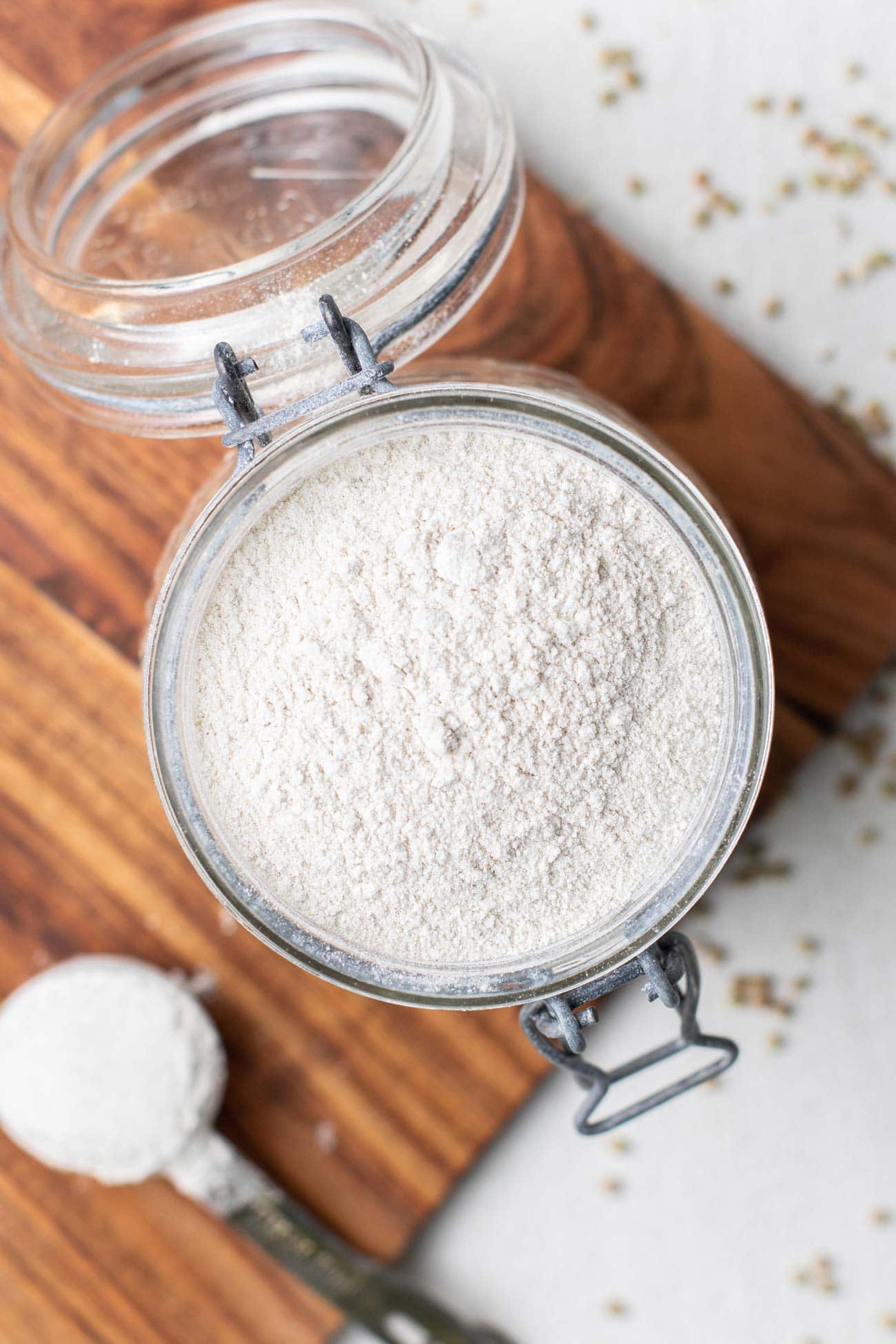
Contents
What is Buckwheat?
Buckwheat is used as a grain, but it is actually seed. Its high starch content gives it properties similar to grain, so it’s known as a pseudo cereal or pseudo grain. Quinoa is another pseudo grain.
The plant is native to Central Asia but is modernly grown across North America.
Two properties of this food make it stand out. It’s gluten free, and it’s a complete plant protein, meaning it has all 9 essential amino acids. This makes it a great food to add to vegetarian or vegan diets.
Naturally gluten free, buckwheat flour is used in baking, for noodles, and also commonly used for animal feed. It can also be steamed or soaked, and used for a breakfast porridge, similar to oatmeal. Steamed or boiled groats can be tossed in salads.
Ready to use your freshly milled buckwheat flour? Try my super popular Blueberry Buckwheat Muffins, or these simple and tasty Buckwheat Pancakes. You’ll love the nutty, wholesome flavor!
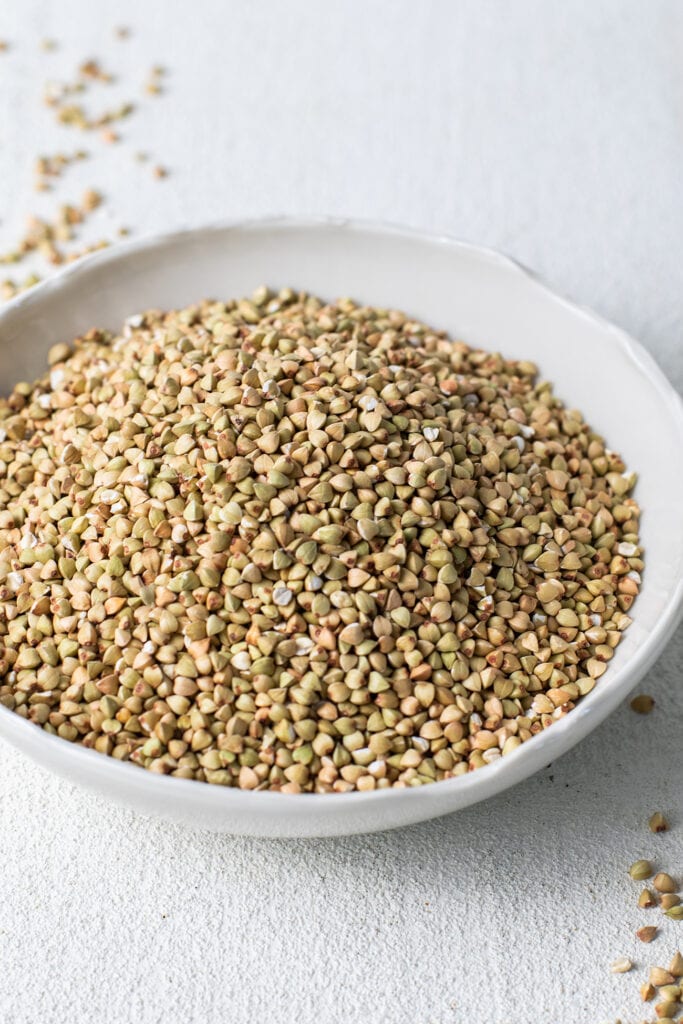
Buckwheat Nutrition
The high protein and fiber content make this food stand out nutritionally.
In addition, buckwheat is an excellent source of potassium, phosphorous, magnesium, and calcium.
One cup, or 170 grams (g), of raw buckwheat groats contain the following nutrients: (source: USDA FoodData Central)
Macronutrients:
- 583 kcal
- 22 g of protein
- 6 g of fat
- 122 g of carbohydrate
- 17 g of fiber
Notable micronutrients:
- 782 milligrams (mg) of potassium
- 590 mg of phosphorous
- 393 mg of magnesium
- 30 mg of calcium
- 4 mg of iron
Raw Buckwheat Groats vs. Roasted Buckwheat (Kasha)
Buckwheat is sold in different forms, mainly as raw buckwheat groats, roasted buckwheat, and kasha.
Raw buckwheat groats are a hulled, grain-like seeds of a buckwheat plant. The groats are a light brown and green in color, and have a mild flavor. This is my favorite form of buckwheat, and I use it to make a homemade buckwheat flour, perfect for baked goods and pancakes.
The seeds are often toasted to give them a deeper, nuttier flavor, and called kasha. This form is great for adding a bolder flavor to salads.
Gluten Free Baking with Buckwheat Flour
It’s common to find buckwheat flour pre milled in stores. However, it’s most often made with roasted buckwheat, which has a strong flavor. The flour is dense and gives baked goods a very distinct flavor.
It’s very simple to make your own organic buckwheat flour!
Raw buckwheat groats can be ground into a flour using a blender. It takes about 1 minute, and the result is a fresh, soft, mild tasting flour, perfect for a range of buckwheat flour recipes.
As with all grains, milling or turning them in to a flour causes them to lose nutrients over time. The fresher the flour, the higher the nutrient content.
Whole grain flours contain higher levels of fat, and fats go rancid over time. Rancid flour will smell strong. Storing whole grain flours in the freezer prevents or delays this from happening.
I buy raw buckwheat groats, and make 1-2 cups of the flour at a time (based on what I am making!). I typically use that within a month. This way, my flour is always as fresh and nutritious as possible.
How to Make Buckwheat Flour from Buckwheat Groats
Step 1: Add buckwheat groats to a blender.
Step 2: Process the groats until a fine, soft flour forms. Do not worry about over blending. Just process the groats until they are very broken down and the flour feels soft. Use buckwheat flour in combination with other dry ingredients, like almond flour, arrowroot, and oat flours.
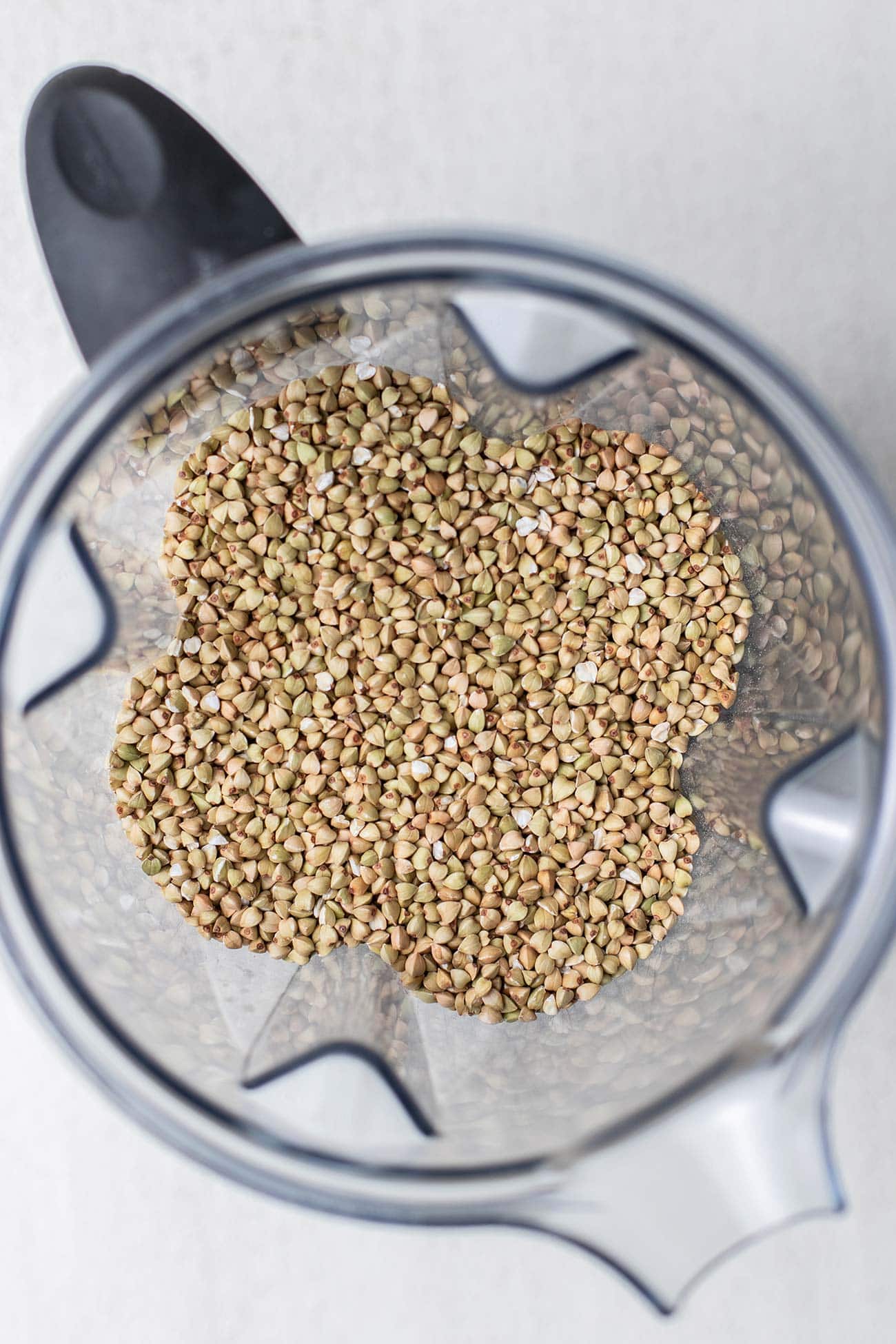
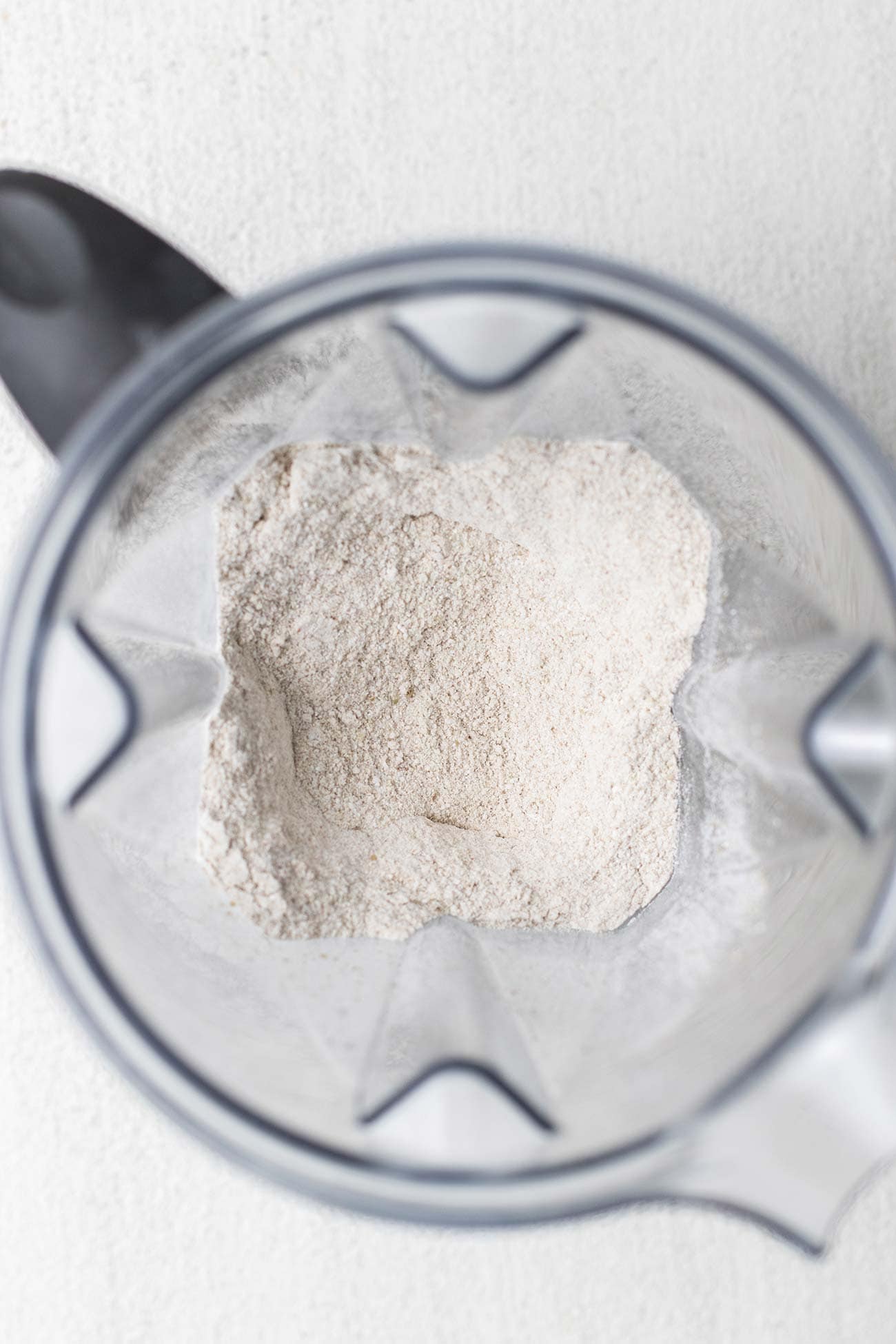
Other Ways to Use Buckwheat Groats
Eating Buckwheat for Breakfast: Buckwheat flour is great for pancakes and waffles, and also perfect in muffins. Buckwheat can be soaked and warmed up and eaten as a porridge, similar to oatmeal.
Incorporating Buckwheat into Lunch & Dinner Meals: Boil raw buckwheat groats and toss them into salads. Think of whole grain salads that use rice or quinoa, and use buckwheat in its place. This pesto green bean salad would be great with the addition of boiled buckwheat.
Baking with Buckwheat: Buckwheat flour generally needs to be combined with other flours for baked goods. I use it in combination with oat, almond flour, and arrowroot starch. It adds a wholesome, nutty flavor, so it’s perfect for things like gluten free graham crackers. I love it in muffins, and it can be used in gluten free desserts in combination with other flours.
Healthy Buckwheat Flour Recipes
- Buckwheat Blueberry Muffins
- Buckwheat Pancakes
- Gluten Free Muffins
- Gluten Free Graham Crackers
- Buckwheat Energy Bars
- Buckwheat Zucchini Muffins
- Crepes Bretonnes (Savory Buckwheat Crepes)
I’d love to connect with you on social media! Find me on Facebook or Instagram where I post daily healthy eating and lifestyle inspiration!
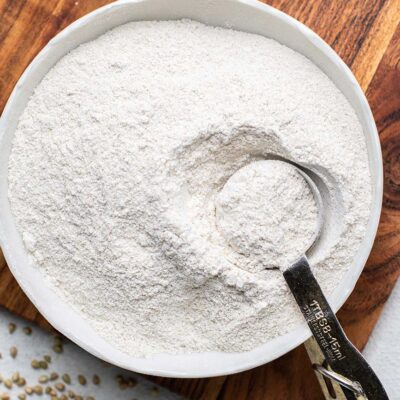
Raw Buckwheat Flour
Ingredients
- 2 cups raw buckwheat groats (raw groats are light brown and green)
Instructions
- Add buckwheat groats to a blender, and process until a fine, soft flour forms. This takes about 1 minute in a high speed blender.
- Look at the flour, and if there are chunks of groats remaining, continue to process until it's fully broken down.
Notes
Nutrition
Research & Further Reading on Buckwheat
The Superfood That Is Perfect for Athletes, Exercise Lovers, And Really All Humans in General.., Food Nerd
What are the health benefits of buckwheat?, Medical News Today
Buckwheat, USDA Food Data Central
Leave a Reply